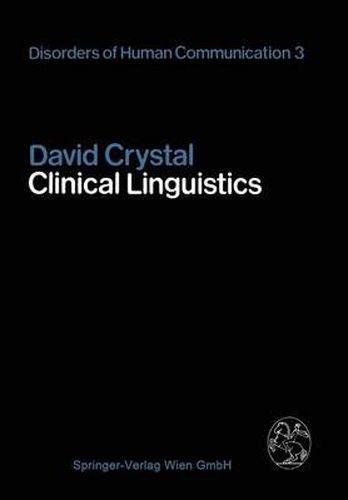Readings Newsletter
Become a Readings Member to make your shopping experience even easier.
Sign in or sign up for free!
You’re not far away from qualifying for FREE standard shipping within Australia
You’ve qualified for FREE standard shipping within Australia
The cart is loading…






This title is printed to order. This book may have been self-published. If so, we cannot guarantee the quality of the content. In the main most books will have gone through the editing process however some may not. We therefore suggest that you be aware of this before ordering this book. If in doubt check either the author or publisher’s details as we are unable to accept any returns unless they are faulty. Please contact us if you have any questions.
This volume is one in a series of monographs being issued under the general title of Disorders of Human Communication . Each monograph deals in detail with a particular aspect of vocal communication and its disorders, and is written by internationally distinguished experts. Therefore, the series will provide an authoritative source of up-to-date scientific and clinical informa tion relating to the whole field of normal and abnormal speech communication, and as such will succeed the earlier monumental work Handbuch der Stimm und Sprachheilkunde by R. Luchsinger and G. E. Arnold (last issued in 1970). This series will prove invaluable for clinicians, teachers and research workers in phoniatrics and logopaedics, phonetics and linguistics, speech pathology, otolaryngology, neurology and neurosurgery, psychology and psychiatry, paediatrics and audiology. Several of the monographs will also be useful to voice and singing teachers, and to their pupils. G. E. Arnold, Jackson, Miss. F. Winckel, Berlin B. D. Wyke, London Preface This book tries to illustrate the practice as well as the principles involved in applying linguistics to the analysis of language disability. In writing it, I have as sumed an audience of professional speech and hearing clinicians who have had little or no formal training in linguistics. Each Chapter therefore begins with a resu me of the main theoretical and descriptive principles needed in order to carry out a clinical linguistic analysis. The relevance oflanguage acquisition studies is a major theme within this resume.
$9.00 standard shipping within Australia
FREE standard shipping within Australia for orders over $100.00
Express & International shipping calculated at checkout
Stock availability can be subject to change without notice. We recommend calling the shop or contacting our online team to check availability of low stock items. Please see our Shopping Online page for more details.
This title is printed to order. This book may have been self-published. If so, we cannot guarantee the quality of the content. In the main most books will have gone through the editing process however some may not. We therefore suggest that you be aware of this before ordering this book. If in doubt check either the author or publisher’s details as we are unable to accept any returns unless they are faulty. Please contact us if you have any questions.
This volume is one in a series of monographs being issued under the general title of Disorders of Human Communication . Each monograph deals in detail with a particular aspect of vocal communication and its disorders, and is written by internationally distinguished experts. Therefore, the series will provide an authoritative source of up-to-date scientific and clinical informa tion relating to the whole field of normal and abnormal speech communication, and as such will succeed the earlier monumental work Handbuch der Stimm und Sprachheilkunde by R. Luchsinger and G. E. Arnold (last issued in 1970). This series will prove invaluable for clinicians, teachers and research workers in phoniatrics and logopaedics, phonetics and linguistics, speech pathology, otolaryngology, neurology and neurosurgery, psychology and psychiatry, paediatrics and audiology. Several of the monographs will also be useful to voice and singing teachers, and to their pupils. G. E. Arnold, Jackson, Miss. F. Winckel, Berlin B. D. Wyke, London Preface This book tries to illustrate the practice as well as the principles involved in applying linguistics to the analysis of language disability. In writing it, I have as sumed an audience of professional speech and hearing clinicians who have had little or no formal training in linguistics. Each Chapter therefore begins with a resu me of the main theoretical and descriptive principles needed in order to carry out a clinical linguistic analysis. The relevance oflanguage acquisition studies is a major theme within this resume.